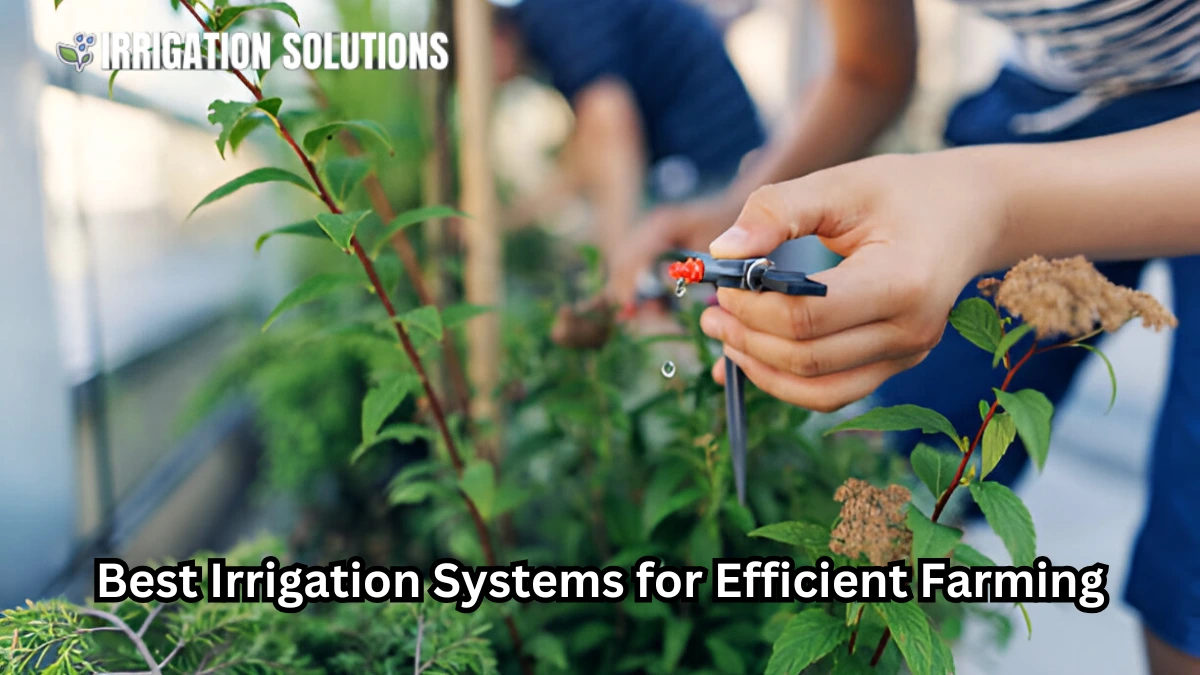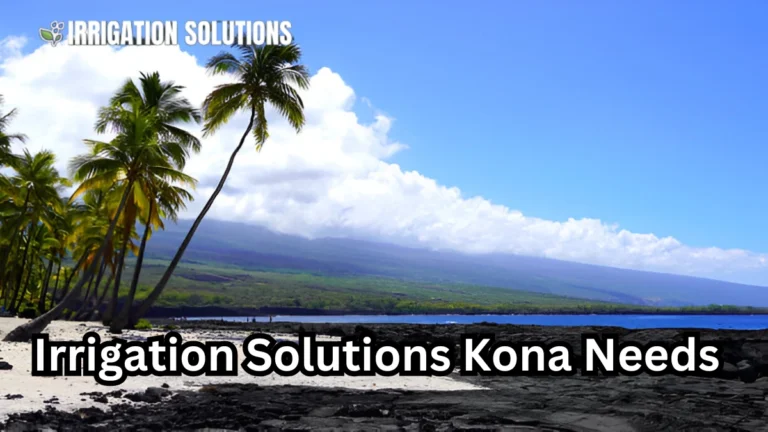Best Irrigation Systems for Efficient Farming

Irrigation systems are at the heart of modern agriculture. As global water resources become increasingly strained and climate patterns shift unpredictably, irrigation has become indispensable for maximizing crop yields. But not all irrigation systems are created equal. Understanding the different types of irrigation systems, their benefits, and how they can be implemented efficiently is essential for any farmer or agriculture enthusiast.
The Role of Irrigation in Agriculture
Irrigation is the process of supplying water to plants in a controlled manner to promote growth. For centuries, irrigation systems have been vital for ensuring crops thrive, particularly in areas where rainfall is insufficient or erratic.
Without irrigation, many regions would struggle to grow crops, leading to food insecurity. In fact, it’s estimated that irrigation accounts for nearly 70% of global freshwater use, highlighting its importance in global agriculture. With increasing pressure to produce more food while conserving water, efficient irrigation systems are more crucial than ever.
Types of Irrigation Systems
When considering irrigation systems, there isn’t a one size fits all solution. Several types of systems have been developed to address specific needs and environments. Let’s explore the most common ones:
Drip Irrigation
Drip irrigation is often hailed as the most efficient irrigation system available. It involves delivering water directly to the root zone of plants through a network of tubes, pipes, and emitters.
Benefits:
- Water efficiency: Drip irrigation reduces water wastage by targeting the root zone with minimal evaporation.
- Reduced weed growth: Watering directly to the roots means weeds are less likely to thrive.
- Fertilizer efficiency: Fertilizers can be mixed with water and delivered directly to the plant’s roots.
Best for:
- Row crops
- Orchards
- Greenhouses
Fact: According to studies, drip irrigation can reduce water usage by up to 60% compared to traditional methods.
Sprinkler Irrigation
Sprinkler irrigation mimics natural rainfall by spraying water over crops via a system of pumps, pipes, and sprinklers. It can be stationary or moveable depending on the size of the field.
Benefits:
- Uniform water distribution: Water is spread evenly across large areas.
- Flexibility: Can be used on a variety of crops, from turf to vegetables.
- Ideal for uneven terrain: Sprinklers can cover sloped areas better than some other systems.
Best for:
- Large fields
- Turfgrass areas
- Lawns and gardens
Surface Irrigation
Surface irrigation involves the distribution of water across the soil surface through gravity. It includes methods like furrow, basin, and flood irrigation.
Benefits:
- Low cost: It’s one of the least expensive systems to set up.
- Simplicity: Requires minimal technical knowledge to operate.
Challenges:
- Inefficient: Water loss through evaporation and runoff is high.
- Labor-intensive: Requires more manual effort compared to automated systems.
Best for:
- Rice paddies
- Large flat fields with crops like cotton or wheat
Subsurface Irrigation
Subsurface irrigation uses a system of buried pipes to deliver water directly to the soil beneath the surface, reducing evaporation and surface water runoff.
Benefits:
- Water conservation: Less water is lost to evaporation or runoff.
- Reduced weed growth: Since water is not applied to the surface, weeds have fewer opportunities to grow.
Best for:
- Areas with limited water supply
- Regions with windy or hot climates
Center Pivot Irrigation
Center pivot irrigation is a mechanized system where a rotating sprinkler arm moves in a circular pattern to irrigate large areas.
Benefits:
- Large coverage area: A single system can irrigate up to 130 acres of land.
- Automation: These systems can be controlled remotely for ease of use.
Best for:
- Large farms or fields with consistent terrain
- Commercial agricultural operations
Factors to Consider When Choosing an Irrigation System
Choosing the right irrigation system is crucial to maximizing efficiency and ensuring the success of crops. Here are several factors to consider:
1. Water Availability
The availability of water is often the most important factor in selecting an irrigation system. If water is scarce, drip irrigation may be the best option as it minimizes waste.
2. Soil Type and Terrain
The type of soil and the field’s topography will also affect your choice. For instance, uneven terrain may benefit from sprinkler or center pivot systems.
3. Crop Type
Certain crops, such as fruits and vegetables, may require more precise irrigation methods like drip irrigation, while crops like rice may do better with surface irrigation.
4. Budget and Maintenance Costs
While more efficient systems like drip irrigation may have higher initial costs, they can save money in the long run due to their water and energy efficiency. Consider both installation and maintenance costs when deciding.
5. Local Climate
In areas with high winds or temperatures, subsurface irrigation or drip irrigation might be better due to their lower evaporation rates.
Benefits of Implementing Modern Irrigation Systems
Adopting modern irrigation systems brings numerous advantages for both large scale commercial farmers and small scale growers.
Increased Water Efficiency
As water becomes a more valuable resource, using it efficiently is crucial. Modern systems like drip and subsurface irrigation minimize water loss, ensuring that crops get the necessary hydration without wasting valuable resources.
Improved Crop Yields
Efficient irrigation systems allow for consistent watering, which in turn can boost crop yields. By providing crops with the right amount of water at the right time, plants can thrive and produce better quality fruits and vegetables.
Reduced Labor Costs
Automated systems such as sprinkler and drip irrigation reduce the amount of labor required to water crops. With proper setup, these systems can be monitored and controlled remotely, freeing up time for farmers to focus on other tasks.
Environmental Benefits
Modern irrigation systems reduce runoff, erosion, and waterlogging, which are common side effects of inefficient irrigation methods. By using less water and minimizing waste, they contribute to more sustainable farming practices.
Case Study: Drip Irrigation in Israel
Israel is renowned for its innovative approach to agriculture, especially in the field of irrigation. With water scarcity as a constant challenge, Israel has developed highly efficient drip irrigation systems that have revolutionized its agricultural industry.
In regions like the Negev Desert, drip irrigation is used to grow crops like tomatoes, cucumbers, and peppers, with water usage reduced by up to 70% compared to traditional methods. This innovative system has transformed Israel into one of the world’s leading agricultural exporters, even though over 60% of the country is arid or semi arid.
How to Implement an Irrigation System on Your Farm
Implementing an irrigation system is an investment in your farm’s productivity. Here’s a step by step guide to get started:
Step 1: Assess Your Water Supply
Before choosing an irrigation system, assess the water sources available to you, whether it’s well water, surface water, or municipal sources.
Step 2: Understand Your Crop Requirements
Different crops have different water needs. Research the specific watering needs of your crops, considering factors such as growth stage, climate, and soil conditions.
Step 3: Select the Right System
Based on your available resources and crop needs, choose the system that fits best. Drip irrigation is ideal for high value crops, while sprinklers work well for turf or large fields.
Step 4: Installation
Work with an irrigation expert or hire a professional to install your system. Proper installation is crucial for ensuring the system works efficiently.
Step 5: Maintenance and Monitoring
Once your system is installed, regular maintenance is essential. Ensure that pipes and emitters are free from clogs, and monitor your system to make adjustments based on seasonal needs.
Future Trends in Irrigation Systems
The future of irrigation lies in further advancements in technology. Some emerging trends include:
- Smart Irrigation: Automated systems that use sensors and weather data to optimize irrigation schedules.
- Solar Powered Irrigation: Solar energy is being used to power pumps, reducing energy costs.
- Hydroponics and Aquaponics: These soilless farming methods are being integrated with irrigation systems to maximize water use and minimize waste.
Conclusion
Irrigation is a cornerstone of modern agriculture, essential for producing food in regions where water is scarce. With the right system, farmers can increase water efficiency, improve crop yields, and reduce environmental impact. Whether you choose drip irrigation for its precision or sprinkler systems for their versatility, the key is selecting a system tailored to your farm’s needs.
Adopting the right irrigation system is not just about watering crops; it’s about creating a sustainable future for agriculture.






